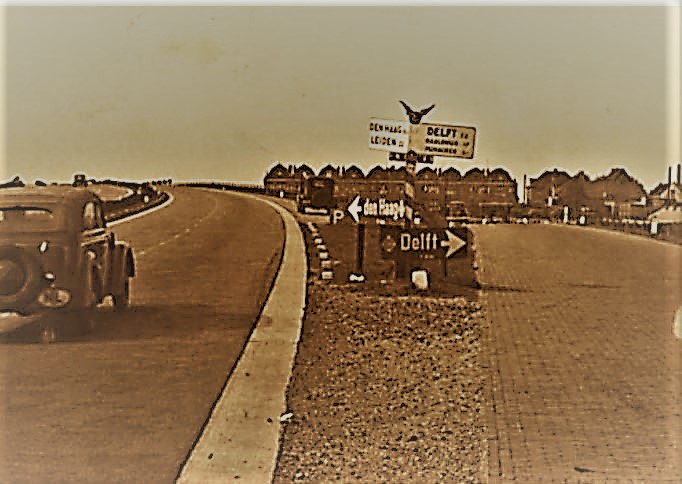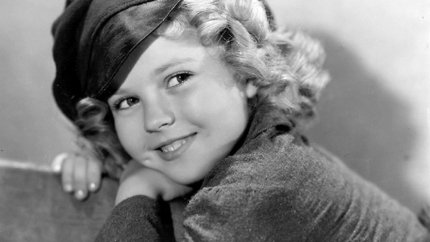
Not all murders committed during 1939 and 1945 were war related. Just because there was a war going on didn’t mean that the ‘regular’ criminals’ stopped their efforts. In fact the war would often give them a cover, so much so that some of these cases were never solved.
The Ora Murray case

Near dawn on the morning of July 27, 1943, the son of a caretaker at the Fox Hills Golf Course was startled by the loud barking of a dog, Pete, an Airedale belonging to one of the groundsmen.

The boy went to investigate, thinking that Pete had cornered a gopher. When he found Pete, the dog was standing near the semi-nude mutilated body of a woman. The boy called the Sheriff’s Department.
LASD(Los Angeles Sheriff’s department) Inspector Penprase arrived at the murder scene, which was about 100 yards from the clubhouse. Penprase told reporters that it was evident that the victim, soon identified as Mrs. Ora Murray, had been fierce in defense of her life despite the fact that she was recovering from three broken ribs.
Most of her undergarments had been ripped away, and her dress was in tatters. Under Murray’s body was a flattened gardenia corsage wrapped with tinsel. The press called the case The Gardenia Murder.

According to Inspector Penprase, it appeared that Murray had been strangled to death. Ora had last been seen alive at 11 pm. the night before her slaying with a man named Paul. While the search for Paul continued, Ora’s sister, Mrs. Latona Leinnan was located. She told cops that she and Ora had gone to a public dance together. It was at the dance that Ora met a man who suggested the three of them go out for a drive. Leinnan asked the man if he’d stop by her house first so her husband could join them and make it a foursome. When they reached Latona’s home her husband wasn’t in the mood to go out, so Ora left with the stranger.
The mystery man, Paul, was described by Latona as about 30, 135 pounds, and five feet eight inches tall. He had black hair and he was wearing a dark, double-breasted suit. He was driving a 1942 Buick convertible coupe with a three inch silver stripe painted around the body.
About one week following the discovery of her body, LASD detectives received a phone call from a woman who said that she’d been jilted by a man named Grant Wyatt Terry — and he matched the description of the mystery man, Paul.
Terry’s spurned lover, Miss Jeannette J. Walser, told a tale of a whirlwind courtship by the possible slayer and his disappearance with a $300 diamond ring and $700 in cash. Jeanette had given Terry the cash and jewelry shortly before they were to be married.
Jeanette told Inspector Penprase that she had met Terry at a cocktail lounge on July 17, and he proposed marriage to her two days later! He told her he was an attorney for the Feds and was assigned to various Army camps, then he borrowed her car for “an important trip to San Diego”. Walser’s car matched the description of the one driven by “Paul”. Ora’s sister Latona was shown a photo of Terry, and she identified him as Paul.

Finally in March 1944 the man known as Paul, with whom Ora had gone on her last car ride, was seized in New York by the FBI. His name wasn’t Paul, and his name wasn’t Terry (as he had told Jeanette, his heartbroken fiancee), his real name was Roger Lewis Gardner.He was never tried for the murder for the jury did not think he was a killer, a con man yes, but not a killer.
The Georgette Bauerdorf case

Georgette Bauerdorf was a young socialite with a grand future—until 1944, when her life was cut short in the dead of the night.
Born to an oil tycoon in New York City in 1924, Georgette lived a life of privilege. She and her older sister attended a convent school on Long Island, where they were trained in goodness and propriety. When the girls’ mother died in 1935, the Bauerdorf siblings and their father moved to California, where Georgette was once again enrolled in a school that befit her place in society—alumnus of the Westlake School for Girls in Los Angeles included Shirley Temple and Myrna Loy.
Upon graduation in 1941, young Georgette moved to West Hollywood to pursue an acting career. By the age of 20, she found work at the Los Angeles Times in the Women’s Service Bureau and at the Hollywood Canteen—a dining and dancing club that catered to young men in uniform. Georgette called El Palacia her home, a grand Spanish-style house that played host to numerous celebrities. Her evenings were filled with nights out on the town; she was courted often and enjoyed the attention of her many suitors.
Exactly what happened on the night of October 11, 1944 remains a mystery. It was a Wednesday; Georgette was at the Canteen, where her role as a Junior Hostess meant she danced with and entertained the servicemen on layover in Los Angeles. Nothing seemed out of the ordinary that night. At the end of her shift, she climbed into her sister’s Pontiac coupe and drove home.
At 11:00 a.m. that following morning, Georgette’s maid and a janitor arrived to clean her apartment. They were met with an unlocked front door. The cleaners entered and found Georgette’s lifeless body face down in her bathtub, the water still running.
In the days following the murder, police received a leter from a Sergeant Gordon Aadland. Aadland claimed that a woman matching Georgette’s description gave him a lift through Hollywood on the night of October 11.

In the letter, he described the woman as appearing quite nervous, though he would downplay this claim in later years.
The killer, meanwhile, vanished into the night after the slaying, driving off in Georgette’s car. The vehicle was found some distance away, abandoned and out of gas. It was the last trace of the killer in a case that quickly went cold.
The case of Josslyn Hay, Lord Errol

Josslyn Hay, Lord Erroll – he was found shot dead in his car on 21 January 1941, after a night with his mistress, Lady Delves Broughton. He was known as the king of the Happy Valley set: white socialites who had drunken orgies in Kenya. Ex-lover Alice de Janzé was suspected, but had an alibi. Jealous husband Sir Jock Delves Broughton was tried and acquitted. He killed himself in 1942. The mentally ill de Janzé had committed suicide in September, 1941, three months after the trial.
The case of Harry Oakes

Sir Harry Oakes, 1st Baronet of Nassau (23 December 1874 – 7 July 1943) was an American-born British Canadian gold mine owner, entrepreneur, investor and philanthropist. He earned his fortune in Canada and in the 1930s moved to the Bahamas for tax purposes, where he was murdered in 1943 in notorious circumstances. The cause of death and the details surrounding it have never been entirely determined, and have been the subject of several books and four films. He was found in his mansion in Nassau, Bahamas on 8 July 1943. His son-in-law, Count Alfred de Marigny, was arrested shortly afterwards based on evidence allegedly uncovered by two Miami police detectives brought in to work the case, who had upset their Bahamanian counterparts by completely taking over the investigation. However, weaknesses in the case led to de Marigny’s acquittal; no one else has ever been tried.

The case of David Bacon
 Actor David Bacon, best known for playing Bob Barton in the Masked Marvel serials of the 1930s, died shortly after crashing his car in Santa Monica, California on 12 September 1943. Afterwards he was found to have been suffering from a stab wound to the chest; no suspect has ever been identified.
Actor David Bacon, best known for playing Bob Barton in the Masked Marvel serials of the 1930s, died shortly after crashing his car in Santa Monica, California on 12 September 1943. Afterwards he was found to have been suffering from a stab wound to the chest; no suspect has ever been identified.

According to an autopsy report, a person could live for 20 minutes with such a wound. The interior of Bacon’s car was soaked with blood. It was never clear whether Bacon was stabbed inside or outside the car. The knife was never found, even though the field was thoroughly searched. So many questions unanswered.

He was born Gaspar Griswold Bacon, Jr. in Barnstable, Massachusetts, and his family was one of the prominent, politically active Boston Brahmin families. His father, Gaspar G. Bacon, was on the board of Harvard University, and later, in the 1930s, served as lieutenant governor of Massachusetts.
Bacon married Austrian opera singer Greta Keller in ‘42 and began to obtain several small film roles, the biggest being Republic’s “Masked Marvel” serial filmed from July 14 to August 18, 1943. About this time Hughes signed Bacon to an exclusive contract, intending to use him as Billy the Kid in “The Outlaw”. However, Hughes later deemed Bacon unsuitable, probably due to his non-western New England upbringing. He was replaced by Jack Beutel.
This is where innuendo comes into play. In interviews after Bacon’s murder, his widow alleged there was a homosecual relationship between Hughes and Bacon and blames her husband’s cancellation from “The Outlaw” on a “lover’s quarrel.” However, Hughes biographies have found no validity to this claim.
Witnesses to the September car crash claimed to have seen a passenger in the car. Two others claimed to have seen a man and a woman.
Bacon’s wife returned to Europe after the war then returned to the U.S. in the ‘50s where she became a popular cabaret singer.

A few years before her death in 1977 her voice was used in the Oscar winning movie “Cabaret” (‘72) singing the song “Heirat”.Bacon’s killer was never caught, The Masked Marvel Murder Mystery remains unsolved. Today, all files pertaining to the case have been destroyed.
The Ernst Dehmel case

For the last one I don’t really care if this case get solved .Ernst Dehmel, 30, a decorated officer in the German Waffen-SS, was allegedly beaten to death by French soldiers who had him in their custody at Remscheid-Lüttringhausen on 7 August 1945. No charges have ever been brought.
I am passionate about my site and I know you all like reading my blogs. I have been doing this at no cost and will continue to do so. All I ask is for a voluntary donation of $2, however if you are not in a position to do so I can fully understand, maybe next time then. Thank you.
To donate click on the credit/debit card icon of the card you will use. If you want to donate more then $2 just add a higher number in the box left from the PayPal link. Many thanks.































 Actor David Bacon, best known for playing Bob Barton in the Masked Marvel serials of the 1930s, died shortly after crashing his car in Santa Monica, California on 12 September 1943. Afterwards he was found to have been suffering from a stab wound to the chest; no suspect has ever been identified.
Actor David Bacon, best known for playing Bob Barton in the Masked Marvel serials of the 1930s, died shortly after crashing his car in Santa Monica, California on 12 September 1943. Afterwards he was found to have been suffering from a stab wound to the chest; no suspect has ever been identified.



You must be logged in to post a comment.